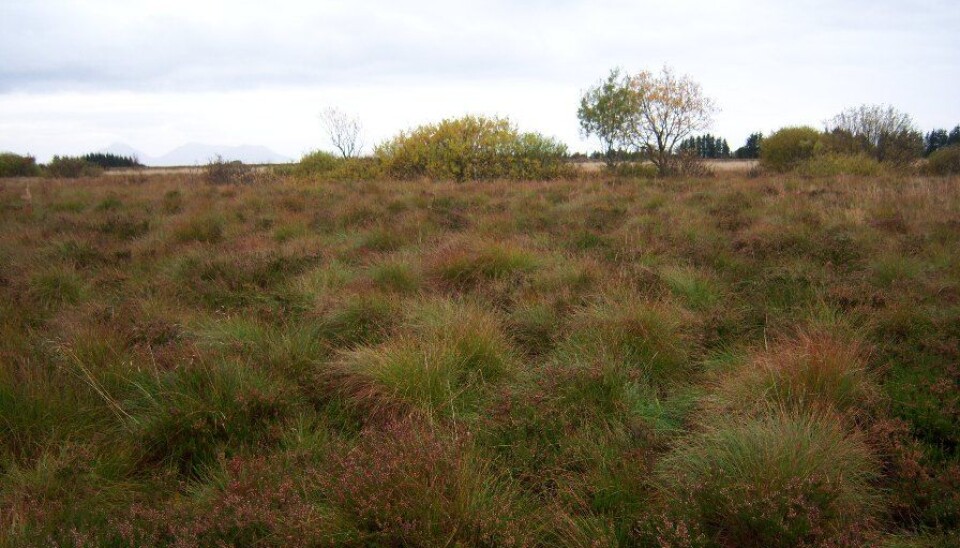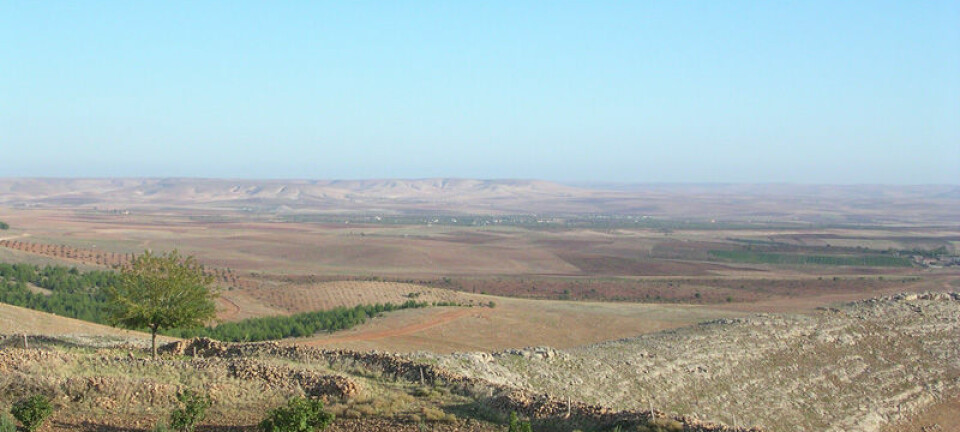
Damming bogs can curb climate gases
Farmers can help reduce CO2 emissions by restoring bogs which were previously drained for agriculture.
Denne artikkelen er over ti år gammel og kan inneholde utdatert informasjon.
About seven percent of all agricultural land in Norway was initially marshy. Former bogs or mires are often used for growing grass or hay. In such a rocky country they’ve also been prized by farmers for planting root vegetables such as carrots and potatoes.
This has its impact on the climate, because bogs are really efficient traps of the carbon in dead organic material. But once they are drained and ploughed bogs start releasing the greenhouse gas CO2.
In one year a decare - equivalent to a quarter acre - of cultivated bog land discharges about as much CO2 as a car.
The combined annual CO2 emissions of such farmland in Norway add up to two million tonnes, or about 5-10 percent of Norway’s human-caused CO2 discharges.

“A really easy way of reducing our emissions would be to restore bogs that have been cultivated but are now fallow. It’s just a matter of returning them to their natural state,” says Arne Grønlund, a senior researcher at Bioforsk, the Norwegian Institute for Agricultural and Environmental Research.
“Not only is it good for the climate, but it’s also beneficial for biodiversity and any species dependent on bogs.”
Fill it with water − stop CO2
Bogs consist of masses of dead organic material. As long as such wetlands aren’t disturbed the material doesn’t decompose and the organic carbon isn’t being released as CO2. But as soon as a mire is drained and air mixes in - which it will if the farmer wants to raise any rutabagas - the preserved material starts decomposing. As a result CO2 leaks out.
Some of the bogs once converted to farmland have been laid fallow, for instance where they have sunk down due to drainage and are no longer easily cultivated.

But the CO2 emissions prevail even though the farmer has given up on the land when the drainage ditches that made a field continue to run off water.
“Thus the easiest way to stop these emissions is to restore the bog − quite simply by plugging up the channels where water is running out. If dams are made here and there, the canals will refill with water and the drainage system won’t work anymore,” explains Grønlund.
Methane and laughing gas balance out
However, he points out that carbon dioxide isn’t the only climate gas involved here. Bogs release other gases too.
“Bogs release methane and laughing gas - nitrous oxide - in addition to CO2 and these are potent climate gases,” says the scientist.
Methane acts in this context exactly contrary to CO2, because less is released when you cultivate the mire, but more is emitted by it in its natural state. Methane has to be factored into the equation when considering any restoration of a bog to curb climate gas emissions.
The same goes for nitrous oxide. But it behaves like CO2: More is released when you cultivate, less when you restore the bog.
So what’s the net result?
That’s something Grønlund and his colleagues aim to ascertain on Smøla Island in northwestern Norway. There they’ll test a bog that has been cultivated for decades and the researchers have a good idea of what the result will be:
“You can count on ethane and laughing gas counterbalancing one another – emissions of the one if you cultivate the land will be about the equivalent to what you wind up with of the other if you restore the bog. So either way it’s CO2 that has the most impact,” says Grønlund.
Ownerless emissions
Grønlund and colleagues have measured emissions of CO2, methane and laughing gas from a test area of bog land on Smøla Island for one season. This autumn they are damming up some of the experimental area and will continue to monitor emissions to see what changes occur after the bogs refill with water.
“This is simply a matter of giving nature a helping hand so that the bogs don’t lie fallow like they were some sort of derelict industrial park,” says Grønlund.
A problem will arise if a decision is made to start restoring bogs. Who’s responsible for the climate gas emissions from formerly cultivated bogs?
“This is an emissions outlay that nobody takes responsibility for but it’s certainly man-made. If the bog had never been cultivated the CO2 wouldn’t have been released.”
Big climate gain from many small contributors
Much of the momentum in international climate initiatives petered out after the collapse of the climate summit COP15 in Copenhagen in 2009, and few are talking about any single major or ultimate solution to the climate problem.
It’s certainly much easier to find small, site-specific or type-specific measures that can improve climate ledgers on a lesser scale.
“There are no individual major climate initiatives that have a big potential for agriculture. But there are very many small ones that can be combined to make a real difference,” says Grønlund.
------------------------------
Read the Norwegian version of this article at forskning.no
Translated by: Glenn Ostling
































